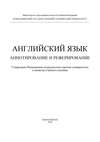Kitabı oku: «The American Duchess», sayfa 6
3
One and Only

By the spring of 1934, Wallis and Ernest’s life was almost ‘completely caught up and submerged in the prince’s private world’. The Simpsons received the ultimate invitation of society’s summer season: to join the prince’s party for Ascot week. The royal procession from Windsor Castle to the racecourse was a brilliant piece of pageantry – the king, queen, their family in open landaus, with bewigged postilions astride the grey horses. ‘That year, as I watched from the Royal Enclosure,’ Wallis recalled, ‘I felt an odd surge of pride and admiration when I saw that fleeting, boyish smile directed at us from under his grey topper.’
When the prince invited Wallis and Ernest as his guests on his summer holiday to Biarritz, Wallis initially declined. Ernest was due to go to America on business and she had invited Aunt Bessie to stay with her in his absence. Not to be deterred, the prince reassured Wallis that he would welcome Bessie. Her seventy-year-old aunt, would, of course, make the perfect chaperone.
It was a small party that set off for France on 1 August. The prince, his assistant private secretary, Hugh Lloyd-Thomas, his equerries, ‘G’ Trotter and John Aird, and his old friends, Lieutenant-Commander Buist and his wife Gladys, and Wallis and Aunt Bessie. Edward had rented a sprawling villa called Meretmont, overlooking the ocean. The holiday did not get off to a promising start. There were two days of continuous rain, then their regal host suffered from a surfeit of langoustines and was sick at his table in the Café de Paris. Fortunately, they soon settled into a happier routine. ‘As at the Fort, life was simple – swimming and sunbathing, golf, sometimes a little bridge,’ said Wallis. Once a week, Edward and Wallis would leave the rest of the party and dine alone at local bistros. This was their first opportunity to be together as a couple. John Aird wrote in his diary of the prince at this time: ‘Behaviour in public excellent, in private awful and most embarrassing for others. The prince has lost all confidence in himself and follows W around like a dog.’
The prince soon tired of Biarritz. When Mrs Kenelm Guinness, known as ‘Posy’, joined the party, she invited them to extend their holiday. Her cousin, Lord Moyne, an heir of the Guinness brewing family and Conservative politician, was sailing his yacht, Rosaura, nearby. Edward jumped at the chance to spend more time with Wallis. Bessie, who had planned a motoring trip in Italy, refused to be diverted and left Wallis with the royal party. John Aird, who was responsible for organising the logistics of joining the cruise, later wrote of Wallis: ‘I feel that she is not basically a bad sort of tough girl out to get what she can, but unless she is much cleverer than I think, she does not know how to work it so as to cash in best.’
The yacht was a converted channel steamer. Lord Moyne, a distinguished-looking Irishman, made a point of boasting to his guests that he was an accomplished seaman and the Rosaura could override any Atlantic gale. In spite of a furious storm in the Bay of Biscay as the royal party went aboard, Lord Moyne ordered the vessel to get underway, announcing: ‘I have yet to see the storm that could keep me in port.’ Wallis, a seasoned seafarer who rarely got seasick, took to her cabin, clinging to the bed as her trunk was flung back and forth across her berth. As the storm mounted in violence, each of the rest of the party retreated to their cabins, with the exception of John Aird. Wallis, convinced that their host would have to accept defeat, asked a steward who checked in on her later that night, how soon they would be in port. He replied: ‘I’ve never seen his Lordship in finer fettle. He has just ordered caviar and grouse and a bottle of champagne for Mr Aird and himself.’
The last straw was when Lord Moyne’s pet, a terrifying monkey who had the run of the vessel, suddenly leapt on Wallis’s bed, having jumped through a skylight. Wallis let out such a scream that Lord Moyne himself was startled from the bridge. A steward was sent to coax the spirited animal from Wallis’s berth. Fortunately, the prince, reeling with seasickness himself, struggled to the bridge and, summoning his finest diplomacy, ordered the yacht to the nearby Spanish port of Coruna.
John Aird felt that Wallis’s fear of physical danger had an enfeebling effect on the prince. Always before, he had been physically intrepid, even recklessly so. He enjoyed flying in aircraft and was always the one who wanted to push ahead in bad conditions. Of the storm they faced in the Rosaura, Aird later wrote bitterly: ‘He was really frightened, and in my opinion is a coward at heart.’
Once the storm had blown over, the party enjoyed a relaxed, delightful cruise down the Spanish and Portuguese coasts. Often finding themselves alone on deck in the evenings, Wallis recognised that here she and Edward ‘crossed the line that marks the indefinable boundary between friendship and love’. Eleven days after leaving Biarritz, they reached Cannes. After dinner with Wallis’s friends, Herman and Katherine Rogers, at their hillside villa, Edward placed a tiny velvet pouch from Cartier in Wallis’s hand. It contained a diamond and emerald charm for a bracelet – the first of what would become his legendary acquisition of exquisite jewellery for his beloved.
The prince’s advisors were aware of the beneficial influence Wallis could have on him. On holiday, Edward liked to sport the simplest of clothes; an antidote to the constant, starchy dressing up that his position required. But Wallis could see that it was inappropriate for the Prince of Wales to go ashore practically deshabille in shorts, shirt and sandals. It took all her powers of persuasion to entice him into linen trousers and a jacket.
It was their visibility on the Côte d’Azur that inspired the first mention in the press of the new romance. That September, Time magazine referred to the fun that ‘Edward of Wales [was] having at Cannes last week with beautiful Mrs Wallace Simpson’. Still the courtiers were not alert to any real danger. At the end of the holiday, John Aird concluded of Wallis: ‘She does not seem to have any illusions about the situation and definitely does not want to do anything that will lose her husband.’
The wiser, more perceptive Aunt Bessie queried her niece’s motives that September. Over dinner, she asked Wallis: ‘Isn’t the prince rather taken with you?’ adding: ‘These old eyes aren’t so old that they can’t see what’s in his every glance.’ Bessie cautioned Wallis that if she continued enjoying this kind of life – which Wallis herself described as ‘Wallis in Wonderland’ – it would leave her niece unsettled and dissatisfied with the life she had known before. Wallis batted away her concerns. ‘It’s all great fun,’ she told her. ‘You don’t have to worry about me – I know what I am doing.’ Aunt Bessie’s conclusion was wisely prescient: ‘I can see no happy outcome to such a situation.’
Similarly concerned were the king and queen. Up until then, they had publicly ignored Wallis’s existence. That September, after his prolonged summer holiday, Edward joined his parents at Balmoral. He had composed a tune for the bagpipes, dedicated to Wallis, called ‘Majorca’. He practised it relentlessly, marching up and down the castle terrace in the rain until the exasperated king threw open the window and yelled at him to stop.
In November, tensions escalated over Wallis in the royal household. The prince had included Mrs Simpson’s name on a list of guests that he wanted to invite to an evening celebration at Buckingham Palace for his brother George, the Duke of Kent’s, wedding to Princess Marina of Greece. When the king saw it he scratched it out. The Duke of Kent later reinstated her on the list.
Wallis resumed her letters to Aunt Bessie, writing from the Fort on 5 November about circulating rumours: ‘Don’t listen to such ridiculous gossip. E[rnest] and myself are far from being divorced and have had a long talk about [the] P[rince of] W[ales] and myself and also one with the latter and everything will go on just the same as before, namely the three of us being the best of friends. I shall try and be clever enough to keep them both.’
In the run-up to the royal wedding at Westminster Abbey on 29 November, the Simpsons spent many happy times at the Fort with the two princes. George was living there in preparation for his marriage, while Princess Marina was in Paris with her parents, selecting her trousseau. Wallis, Ernest and the princes ‘had great fun together’. Wallis declared Princess Marina ‘a most beautiful woman’ whom Prince George was ‘genuinely in love with’. It amused Wallis to see Prince George jokingly checking the tally at the end of the day of how much the wedding gifts that arrived from all over the world were worth. ‘Royalty can be just as interested in the cost of things as the rest of us,’ she sagely observed. She and Ernest gave the royal couple two lamps from Fortnum & Mason, costing ten guineas each. These, she told Prince George, unabashed, were reduced in the sale and were not exchangeable.
For the state reception hosted by the king and queen at Buckingham Palace, Wallis wore a dress designed by Eva Lutyens, daughter-in-law of the famous architect. In a simple column of violet lamé with a vivid green sash, Wallis made a bold impression. Princess Marina, the bride-to-be, was in an unpretentious white evening dress, while Queen Mary was her usual regal staid self in silver brocade with ice-blue paillettes. Wallis, who had borrowed a tiara from Cartier, was understandably thrilled when Prince Paul, Regent of Yugoslavia, the brother-in-law of the bride, told her: ‘Mrs Simpson, there is no question about it – you are wearing the most striking gown in the room.’
However, the evening would hold far more import than being memorable for Wallis’s stylish gown. It would turn out to be the only occasion when she would (briefly) meet Edward’s parents. The prince approached Queen Mary with the words: ‘I want to introduce a great friend of mine.’ Wallis later wrote in her memoirs: ‘After Prince Paul had left us, David led me over to where they [the king and queen] were standing and introduced me. It was the briefest of encounters – a few words of perfunctory greeting, and exchange of meaningless pleasantries, and we moved away.’ Afterwards, Wallis described to her Aunt Bessie the ‘excitement of the prince bringing the Queen up to Ernest and self in front of all the cold jealous English eyes’. Many times that evening, Ernest was left standing alone while the heir to the throne took Wallis off to meet his friends and relations. Prince Christopher of Greece wrote of Edward: ‘He laid a hand on my arm in an impulsive way: “Christo, come with me. I want you to meet Mrs Simpson …” “Mrs Simpson, who is she?” I asked. “An American,” then he smiled. “She’s wonderful,” he added. The two words told me everything. It was as though he had said: “She is the only woman in the world.”’
John Aird recorded in his memoirs that the prince introduced Wallis to his mother ‘and would have done to HM [His Majesty] if he had not been cut off’. After the party, the king was outraged that Wallis had slipped back onto the guest list, shouting: ‘That woman in my house!’ He continued to rant that at least Mrs Dudley Ward had come from a better class, while his son had ‘not a single friend who is a gentleman’. He was referring to Edward’s involvement with the international set. King George gave orders to the Lord Chamberlain that Mrs Simpson was not to be invited to any of the Silver Jubilee functions the following year, nor ever again to the royal enclosure at Ascot.
During the glamorous reception, the prince also took Wallis over to be greeted by the Duke and Duchess of York. Against Wallis’s flat, angular frame and violet column dress, Elizabeth was softer, filling out her pale pink gown. Yet her femininity belied a steely reserve. Wallis curtsied to Edward’s sister-in-law, later describing ‘the almost startling blueness’ of the Duchess of York’s eyes as she felt her cold, appraising stare. Their blue eyes and affection for the Prince of Wales was all the two women would ever have in common. The Yorks, while studiously polite in public, failed to show any warmth towards Wallis. Elizabeth’s close friend, the Dowager Lady Hardinge of Penshurst, who was present at the interaction between the two brothers and their amours, later wrote: ‘I am afraid Mrs Simpson went down rather badly with the duchess from the word go. It may have been the rather ostentatious dress, or the fact that she allowed the Prince of Wales to push her forward in what seemed an inappropriate manner. The Duchess of York was never discourteous in my experience, but those of us who knew her very well could always tell when she did not care for something or someone, and it was very apparent to me that she did not care for Mrs Simpson at all.’
If Elizabeth, born Elizabeth Bowes Lyon, once harboured romantic feelings for Edward, as was rumoured, it would partly explain her enmity towards Wallis. Elizabeth had initially been reluctant to accept his brother, Bertie’s, wedding proposal. ‘Prince Albert pursued Elizabeth for three years and she twice turned down marriage proposals, which protocol demanded were made to her through intermediaries,’ said her equerry, Major Colin Burgess. ‘On the third time, in 1923, when Prince Albert ignored protocol and asked her directly, she accepted.’ The twenty-three-year-old daughter of the Earl of Strathmore was considered a suitable royal match. ‘I believe that it is not impossible that Elizabeth would have liked to marry the Prince of Wales,’ said Hugo Vickers, who knew her. ‘Once the Duke of York took an interest in her, her mother, Lady Strathmore, saw the possibility of a royal union. She thought: “Why not the older brother?” Edward wasn’t interested in any eligible English girl.’
Wallis, ever resourceful, did not dwell on the chill of Elizabeth’s disapproval at Prince George’s wedding celebrations. Instead, she was aware, after the nuptials – where ‘the prince had provided Ernest and me with very good places on a side aisle, from which we had an uninterrupted view of the altar’ – that Edward nursed a sense of sadness and keen loss now that his favourite brother was married. His friendship with his younger brother was, apart from his relationship with Wallis, the most important of his adult life. Wallis, sensitive to the strain of Edward’s loneliness, worked hard to divert him with some humorous irrelevancy or by engaging in a more serious topic that interested him. ‘It was curious to see a man of such dynamic qualities, a man so active and so often filled with the true joy of life, suddenly disappear before my very eyes into uncertainty,’ she wrote. She felt that he was ‘reaching out for something that was as yet unknown to him, something which could anchor his personal life’.
***
Edward described his life before his marriage to Wallis as ‘a disconnected pattern – duty without decision, service without responsibility, pomp without power’. After George’s betrothal, this disconnect seemed to weigh on him more heavily. The heir to the throne continued to struggle with the responsibility of his official duties, while railing against the Palace old guard. He was at heart a moderniser who felt that many of the institutional practices were out of date. He wanted to be seen as ‘Edward the innovator’, a monarch who would let ‘fresh air’ into the ‘venerable institution of kingship’. In 1969, Edward told an interviewer: ‘Before I became King, I was in conflict with the Government of the Day.’ The prince’s visits in 1935 to depressed areas of the country angered the prime minister. Edward later recalled: ‘When Stanley Baldwin got to hear of these trips he called me to the House of Commons. He said: “Why are you going up there? Have you not got other important things to do?” So I said, “No, Mr Baldwin, I think it’s very important to see how these people live. Some of them have been out of work for ten years.”’ Edward felt it was his duty to alert the government that little had been done to alleviate the plight of the unemployed. ‘To some extent I collided with the Establishment,’ he concluded, ‘but not violently. I’m not being conceited but it might have helped revive their thinking.’
As the prince shared the frustrations of his position with Wallis, she realised that she had become a part of his quest, perhaps inextricably so. Each day he drew her ever more intimately into his life. Their dinners alone became more regular and he began telephoning Wallis frequently throughout the day. Flattering, but with his ardour and intense neediness, it was also pressurising and exhausting. On 3 December 1934, Wallis wrote to Aunt Bessie from the Fort that she had been buying all the prince’s Christmas presents for his staff and had to wrap 250 gifts. After her usual domestic update – she had no housemaid – Wallis added, almost casually: ‘I have 2 more bracelets and a small diamond that sticks into my hair. Smart. Ernest says that the insurance is getting steep! A big kiss and all love –.’
Ernest was right to be worried about their insurance premium. That Christmas, Edward gave Wallis £50,000 worth of jewels (including two large square emeralds) followed by £60,000 worth a week later at New Year. The prince should have been more judicious. When the king was alerted by his courtiers that his son and heir had spent £110,000 (£7 million today) on jewels he feared blackmail. Unbeknownst to Edward, the king asked Stanley Baldwin for police help to ascertain the woman’s identity and motives. George V set in motion a controversial surveillance operation that would continue throughout the following year. Sir Vernon Kell, the founder and first director of MI5, initially refused Baldwin’s request to spy on the Prince of Wales because he felt that it would be crossing a constitutional line and could not be justified in terms of national security. Eventually, Sir Vernon grudgingly agreed to put Baldwin’s request to the board at MI5, who overruled the director and gave their assent.
The covert surveillance operation was authorised by the Home Secretary, Sir John Simon, and undertaken by Superintendent Albert Canning of Scotland Yard. Canning began by confirming Mrs Simpson as the recipient of the jewels. ‘She is reputed to be very attractive,’ wrote Canning in one report, ‘and spends lavishly on clothes and entertainment.’ Visitors to Bryanston Court were monitored by the inspector and his team. Detectives also recorded that Mrs Simpson and the prince called each other ‘darling’ while visiting an antiques shop in South Kensington. In the report the shopkeeper remarked that the lady seemed to have the gentleman ‘completely under her thumb’. The information collected by Special Branch was often lurid, almost laughably inaccurate and very boys’ own. It was asserted that Ernest Simpson was ‘Jewish’ and a ‘bounder type’ who was waiting for ‘high honours’ to be conferred on him. Wallis, who two years later referred to becoming the ‘convenient tool’ in the hands of the politicians who created ‘an organised campaign’ to remove Edward from the throne, had no idea at this stage that she was being spied on.
One trumped-up charge against Wallis that later came to light was that, whilst seeing the prince, she was having ‘intimate relations’ with a Ford car salesman by the name of Guy Marcus Trundle. Trundle, known to his family as a fantasist who liked to boast of his ‘conquests’, made these claims about Wallis to anyone who would listen. However, her close friends categorically deny that she would have even contemplated an affair with such a figure. ‘There is absolutely no way that she had an affair with Guy Trundle,’ said Nicky Haslam. ‘I know this to be true,’ John Julius Norwich agreed: ‘She was much too intelligent to have had an affair with a second-hand car dealer when the eyes of the world were upon her. This was merely another bid by the powers that be to discredit her.’
Wallis’s correspondence to her aunt brims with the strain of juggling two men, her husband and the Prince of Wales; it seems completely out of character that she would jeopardise her situation with a third, let alone a man from such an unlikely background. Far from craving further entanglements, she cherished space for herself. When the prince went to Sandringham with his family for Christmas, she considered it ‘a lovely rest for us and especially me’.
The following year, 1935, was thrilling for Wallis. Diana, Lady Mosley summarised her situation: ‘Although the great public knew nothing of the Prince of Wales’s friendship with Mrs Simpson, a fairly wide circle in London knew of it, and those who did thought at first it was just Lady Furness all over again and Wallis the prince’s latest American friend. Society being what it is, Wallis began not just to have a good time but the time of her life. She was courted and flattered.’
Wallis was feted by the Londonderrys (the 7th Marquess was a Cabinet minister and his wife, Edith, Lady Londonderry, held sought-after political receptions); Mrs Evelyn Fitzgerald, sister-in-law of the press baron, Lord Beaverbrook; the Guinnesses; the Cholmondeleys (the 5th Marquess of Cholmondeley would become Lord Chamberlain at the court of Edward VIII); Mrs Laura Corrigan (a society hostess from Colorado); Daphne, Countess of Weymouth; Lady Sibyl Colefax; and Emerald, Lady Cunard.
‘Though nothing about Mrs Simpson appears in the English papers,’ the society photographer Cecil Beaton noted in his diary that autumn, ‘her name seems never to be off people’s lips. For those who enjoy gossip she is a particular treat. The sound of her name implies secrecy, royalty, and being in the know. As a topic she has become a mania, so much so that her name is banned in many houses to allow breathing space for other topics …’
There was something touchingly childlike about Wallis’s excitement at her recognised status in society as Edward’s ‘One and Only’. Instead of always feeling an outsider, as she had done since childhood, she began to embrace the (faux) warmth of acceptance. Lady Cunard, the society figurehead always adorned with ropes of pearls who championed Wallis, memorably said: ‘Little Mrs Simpson knows her Balzac,’ suggesting that Wallis was better read and better bred than people imagined. Emerald Cunard’s lunch parties were legendary due to her ‘throwaway shockers’; invitations to her Grosvenor Square home were coveted. Wallis, who became a regular around her lapis lazuli-topped circular table, was sufficiently savvy to recognise that the fawning society figures were there solely because of the prince. Her glittering position would extinguish the minute Edward lost interest in her. This she accepted and awaited.
Ernest, too, knew that all the attention had nothing to do with him. According to Diana Mosley: ‘He absented himself more and more, and in fact behaved with dignity. Mrs Simpson saw only the prince. If she had seen others, everyone would have known, even if there was nothing in the newspapers.’
In late January 1935, Chips Channon recorded his first meeting with Wallis. ‘Lunched with Emerald to meet Mrs Simpson … She is a nice, quiet, well-bred mouse of a woman with large startled eyes and a huge mole. I think that she is surprised and rather conscience-stricken by her present position and the limelight which consequently falls upon her.’ Those in the know were abuzz with chatter as to what exactly the prince saw in Wallis Simpson. As she herself said later: ‘I could find no good reason why this most glamorous of men should be so seriously attracted to me. I was certainly no beauty, and he had the pick of the beautiful women of the world.’ It was her American independence of spirit, she concluded, along with her breezy sense of fun, that he was drawn to.
Although Wallis valiantly told herself and her aunt that Ernest was completely compliant with her situation, the truth was that Ernest, for all his reverence of royalty, was finding his wife’s ever-growing attachment to another man increasingly hard to tolerate. For all her protestations to Aunt Bessie that her relationship with Ernest was solid, the marriage was starting to disintegrate. ‘Until now, I had taken for granted that Ernest’s interest in the prince was keeping pace with mine,’ she later wrote, ‘but about this time I began to sense a change in his attitude. His work seemed to make more and more demands on his time in the evening. Often he would not return in time for dinner, or when the prince suggested dropping in at Sartori’s or the Dorchester for an hour or so of amusement, Ernest would ask to be excused on the plea that he had an early appointment or that papers from the office needed his attention. He also seemed less and less interested in what I had to say about the prince’s latest news and interest.’
It was the prince’s invitation to a two-week skiing holiday in Austria in February 1935 which highlighted the growing frictions between the Simpsons. Wallis relished the chance to get away; when the prince invited them to join him in Kitzbühel, Wallis ‘naturally accepted for both of us’. When she told Ernest, it precipitated their first ever door slamming row. Ernest, who had business in New York and was no fan of winter sports, wanted Wallis to accompany him on his business trip. Wallis made her choice; the prince over Ernest, and this, unsurprisingly, created the first irreparable fissure in their marriage.
The prince’s staff began to feel alarmed when Edward set off for another holiday with Wallis in the party, yet again without her husband. Accompanying them were Bruce Ogilvy (the prince’s equerry), his wife Primrose and his sister-in-law Olive. Wallis, who did not take to skiing, discovered a fear of the sport, preferring the less demanding après-ski. She looked forward to the afternoon rendezvous of the whole party in the village inn, sipping hot chocolate before the fire. The prince’s entourage stayed in the Grand Hotel and every evening ate at a mountain restaurant where a band played folk music, the prince heartily singing along to the local songs. Edward, loath to return to London, announced after two weeks that he felt like waltzing, ‘and Vienna’s the place for that’. So off the royal party swept, to the Bristol Hotel in Vienna, crossing the Alps by train. His aides were understandably frantic when, after delightful evenings devoted to Strauss, the prince asserted that ‘while these Viennese waltzes are wonderfully tender, there is nothing to match the fire of gypsy violins’. The next morning, on yet another royal whim, they were on their way to Budapest. Edward’s insatiable need to indulge every fleeting impulse was more akin to that of a jaded jetsetter, rather than the heir to the throne, with duties and responsibilities to consider.
It was in a dingy local tavern in Budapest, on the Pest side of the river, where they had been guaranteed to hear the best gypsy music in Hungary, that Wallis had a piercing moment of realisation about the impossibility of her situation. As the violins swelled with melancholy tunes, amid the flickering candles and rough-hewn wooden tables, she ‘had the feeling of being torn apart, of being caught up in the inescapable sadness and sorrow of human suffering; and the look in David’s eyes told me that he was in the grip of the same flow of feeling’. She later wrote that she was ‘scarcely in a condition to differentiate these two worlds between which I giddily swung, hoping to have the best of both, but not quite sure whether I could maintain my footing in either’.
On Wallis’s return to London, it became clear that her sense of foreboding was justified. Her marital footing could no longer be guaranteed. Ernest, now cold and distant, had ‘undergone a change’. He showed no interest in her trip and was uncommunicative about his own visit to New York. For the first time their evenings together were strained, punctuated by arctic silences. Still Wallis did not act on the warning bells, so enraptured was she to be swept up in the prince’s orbit. ‘My concern was no more than a tiny cloud in the growing radiance that the prince’s favour cast over my life,’ she wrote with insouciance. ‘I became aware of a rising curiosity concerning me, of new doors opening, and a heightened interest even in my casual remarks. I was stimulated; I was excited; I felt as if I were borne upon a rising wave that seemed to be carrying me ever more rapidly and even higher.’
It was the Kitzbühel skiing holiday that convinced royal aides that the prince had gone too far. Sir Clive Wigram, George V’s private secretary, visited Edward at Fort Belvedere and told him how concerned the king was about his personal life. In a memo afterwards, he wrote: ‘The prince said that he was astonished that anyone could take offence about his personal friends. Mrs Simpson was a charming, cultivated woman.’ John Aird, meanwhile, could see that putting any pressure on the prince had negligible effect. If anything, he felt that after Sir Clive’s visit ‘the devotion of HRH if possible greater’. Godfrey Thomas, the prince’s equerry, said that he believed the prince knew ‘in his inmost heart’ he was behaving badly. Thomas reassured the courtiers that patience was key. ‘I am sure his eyes will be opened to the folly he is making of himself, and when he does come for help and sympathy, I am sure you will respond as I know I shall.’
The rumour mill amongst the staff at the two royal households, York House and Buckingham Palace, was rife with tales of the prince’s nocturnal habits. It was said that two bedrooms at the Fort had been turned into one for the couple’s benefit, presumably to avoid the risk that, when the house was full, the dressing room adjoining Wallis’s bedroom might be occupied and thus access to her impeded. It is a curious detail that Edward always maintained that he never slept with Wallis before his marriage, and sued for libel an author who referred to her as his mistress. Astonishingly, the subject arose between Edward and his father, when Edward challenged the king over his ban on Wallis’s appearance at court. He wanted Wallis to be invited to the court ball to celebrate the Silver Jubilee in May 1935. The king said that he could not invite his son’s mistress to such an occasion. When the prince swore that she was not his ‘mistress’, the king accepted his son’s word and said that Mrs Simpson could come. ‘I think that this is all for the best,’ wrote John Aird in his diary, ‘but it is rather a shock to think of the Prince of Wales lying on his oath, which a lot of people who know think he has.’










